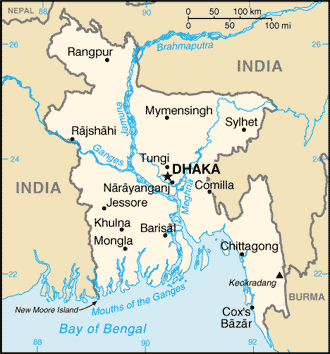Across Bangladesh
-
Across Asia
Across Pacific & Asia
Across Pacific & Asia
Radio Broadcast Stations:
AM 12, FM 12, shortwave 2 (1999
Television Broadcast Stations: 15 (1999) Airports -
16 (2003 est.)
HIV/AIDS: People living with AIDS: 13,000 (2001 est.) Primary Source: World
Fact
Book
|
| .......................................................................... |
.. |
...........................
.............................................................. .................
|
| ........ |
..............................Building Bridges ACROSS the Barriers.................................... .............................................................................. |
........ |




